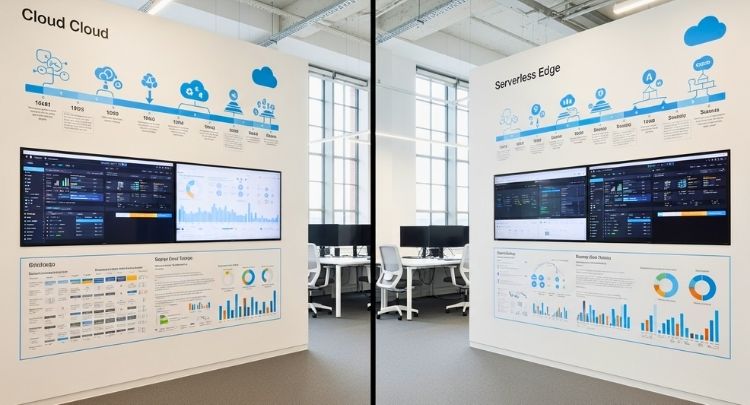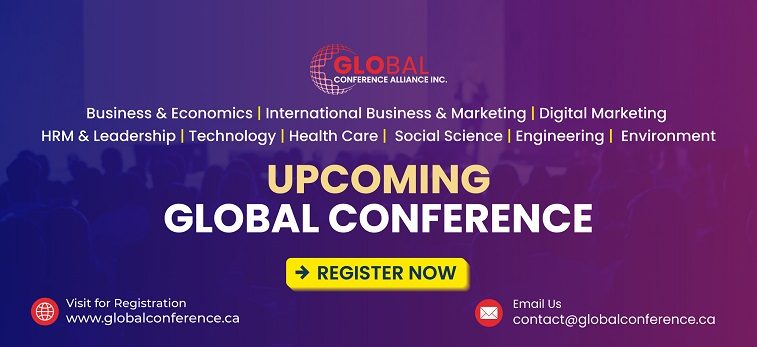Cloud computing is changing how data is stored, shared, and managed in every field. It supports AI systems, big data, and digital services around the world. As technology grows fast, new research areas are emerging that make the cloud more powerful and efficient. From smart automation to green solutions, innovation never stops.
The top cloud computing research topics in 2025-26 include serverless systems, AI in the cloud, multi-cloud setups, edge computing, and strong security. Other key areas are green cloud computing, quantum integration, cost optimization, and faster system recovery.
Explore these trends and discover which topics fit your research goals. Read on to find the best ideas today!
Top Cloud Computing Research Topics in 2025-26
Cloud computing is changing everything about how we store, process, and use data every day. It powers online games, apps, and even smart home systems. In 2025–26, research in this field is growing faster than ever. Experts are exploring new ways to make the cloud safer, smarter, and more eco-friendly. Here are the top research topics related to cloud computing.
Serverless Cloud Systems
Serverless computing lets developers run programs without worrying about servers. Platforms like AWS Lambda make it possible to handle large amounts of data easily. Researchers are working on improving how these systems scale up and down automatically. They also focus on speeding up big data analytics so that information can be processed faster and cheaper. This helps companies save both time and cost while staying efficient.
AI and Machine Learning Integration
Cloud platforms are becoming smarter by using machine learning. This means the cloud can learn from data and make better decisions. In 2025–26, researchers are studying how to build systems that can predict problems before they happen and improve app performance. Using special hardware like GPUs helps handle complex tasks more quickly. This makes the cloud faster and more useful for everyone.
Hybrid and Multi-Cloud
Sometimes one cloud is not enough. Big companies often use many clouds from different providers for better control and flexibility. This is called a hybrid or multi-cloud setup. Researchers are exploring how to move data smoothly between these clouds. They are also finding ways to reduce problems like downtime and data loss while keeping everything connected. It’s all about smarter teamwork between clouds.
Edge and Cloud Connection
Edge computing brings the cloud closer to the user. It means processing data right where it’s created, like in sensors or cameras, before sending it to the main cloud. This is super helpful for things like smart cars or health devices that need fast responses. Research in this area focuses on making the connection between edge and cloud systems stronger and more reliable.
Cloud Security
Keeping data safe is one of the biggest goals in cloud research. Experts are working on new ways to protect information using advanced security methods. These include stronger encryption, zero-trust models, and tools to stop hackers before they can attack. Better security also means more confidence for people and businesses who use cloud services daily.
Green Cloud Computing
As more data centers open around the world, they use a lot of energy. Green cloud computing focuses on saving that energy and protecting the planet. Researchers are creating systems that run on renewable energy and adjust automatically to save power. This way, the cloud can grow without harming the environment, a big step toward a cleaner future.
Quantum Cloud
Quantum computing is one of the most exciting new areas of technology. Researchers are now trying to connect quantum systems to the cloud. This could make it possible to solve problems that normal computers can’t handle. Although still early, this field could change everything from data security to scientific research in the next few years.
Sovereign Clouds
Different countries have their own data laws, and not every cloud follows them. That’s where sovereign clouds come in — they keep data within local rules and borders. This is especially important for governments and hospitals that deal with sensitive information. Researchers are studying how to design these special clouds without losing speed or efficiency.
Cost Optimization
Cloud services can get expensive if not managed properly. Researchers are creating smart tools that help track usage and reduce waste. These systems make sure companies pay only for what they use. With better budgeting tools, small businesses can use cloud power without spending too much. Saving money while keeping good performance is the main goal here.
Disaster Recovery
Sometimes systems crash or lose data. Cloud research aims to make recovery faster and smoother. Experts are working on ways to back up data instantly and restore it in seconds. This ensures that even after a cyberattack or system error, businesses can keep running normally. It’s all about making the cloud stronger and more reliable for everyone.
Cloud computing continues to grow with new research that touches every part of technology. From greener systems to better security, these ideas are shaping the future. You can even learn about them at events and conferences held worldwide, such as a conference in Mexico, the USA, or Germany, where experts share fresh insights and discoveries about cloud innovations every year.
Key Areas You Should Be Focus on for Cloud Computing Topic Research
Cloud computing research covers many exciting fields that shape how technology grows. Each area helps improve speed, safety, and sustainability. Understanding these key areas can guide your study or future project ideas. For example:
- Cloud Infrastructure and Architecture
- Security and Privacy
- Green and Sustainable Cloud
- Edge and IoT Integration
- AI and Automation in Cloud
- Quantum and Future-ready Cloud
Why Cloud Computing Topic Research is Important?
Cloud computing is part of almost everything we use today, from online games to video calls and smart home systems. It makes sharing and storing data faster and easier. Every day, new tools and apps depend on it to work better. That’s why learning and researching this field matters more than ever. Here are more reasons.
Building a Smarter Future
Cloud computing research helps build a world where information moves easily between people and devices. It improves how hospitals store patient data, how schools teach online, and how companies manage information safely. By understanding this field, young researchers can create smarter systems that save both time and energy. It’s the foundation of many future technologies.
Improving Everyday Life
The cloud powers almost everything we do online. From saving pictures on our phones to streaming music, it makes life simple. Research helps make these systems faster, safer, and more reliable. As technology grows, cloud computing will keep solving real-life problems in health, education, and communication around the world.
Saving Time and Cost
Big organizations use the cloud to avoid buying expensive hardware. Research focuses on how to save even more money and time. New studies explore ways to reduce waste and use fewer resources. Understanding this helps companies build better tools without spending too much, keeping services affordable for users.
Better Data Security
Keeping data safe is one of the biggest reasons cloud research is important. Every year, hackers find new ways to break into systems. Researchers study better encryption, password protection, and smarter systems that detect threats early. These studies protect people’s personal information and make online spaces more secure.
Growing Career Opportunities
Cloud computing has opened doors to many new careers. From software engineers to data managers, every role needs updated knowledge. By researching this field, students and professionals can prepare for future jobs. It’s a growing area where creativity and technical skills come together to solve global challenges.
Sharing Knowledge and Innovation
Learning about cloud computing isn’t just about reading books or coding. It’s also about connecting with others and sharing new ideas. Many researchers learn from participating in cloud computing conferences, where they meet experts, discuss new tools, and explore better solutions together. This helps the field move forward and keeps learning exciting.
Protecting the Environment
Cloud data centers use a lot of electricity. Research on green cloud systems helps save energy and reduce pollution. Studies look at how to use renewable energy and smarter cooling systems. With this work, the cloud becomes cleaner and better for our planet, supporting a sustainable future.
Ways to Choose the Right Cloud Computing Research Topic
Choosing the right cloud computing topic can make your research fun and meaningful. It helps you stay focused, creative, and up to date. The best topic should match your interests, current trends, and future goals. Here are some simple methods to help you choose wisely.
Follow Your Interest
- Pick a subject that truly excites you because passion keeps your research strong and enjoyable through challenges and changes.
- Think about what part of cloud computing catches your attention and makes you curious to explore deeper ideas freely.
- Discuss your favorite technology areas with friends or teachers to get new views and shape your topic better.
Check Current Trends
- Look at the newest updates in cloud technology and notice which ideas are becoming popular around the world today.
- Reading recent articles and reports can help you spot gaps where new research can easily make a difference.
- Attend online talks or webinars to listen to experts explain future challenges and trending research directions for a better understanding.
Know the Problem
- Every strong research topic begins by understanding the real-world problems that cloud systems currently face across industries and services.
- Try to think about issues like data safety, speed, or energy use that still need smarter and clearer solutions.
- Write down problems you notice in apps, systems, or networks to create research questions that actually solve something important.
Match Your Skills
- Before deciding, check what tools, languages, or techniques you already know and how they connect with your chosen idea.
- It’s easier to grow when your research builds on skills you understand while still challenging you to improve more.
- Pick a topic that lets you use your strengths but also learn something new without feeling lost or confused.
Find Reliable Sources
- Search for papers, case studies, and journals that offer facts, results, and examples related to your chosen research field.
- Having enough material helps you explain your topic clearly and support your findings with trusted information from experts.
- If the topic lacks enough references, you may struggle later, so always check for strong resources before finalizing it.
Talk to Experts
- Teachers and mentors often share useful advice that helps refine ideas and avoid topics that feel too broad or unclear.
- Meeting professionals from cloud computing fields can reveal hidden opportunities and guide you toward smarter topic choices easily.
- Experts also help confirm whether your topic is realistic and worth the time and effort you plan to spend.
Think About Future Impact
- A good research topic should add value not just today but also in future cloud technologies and daily digital systems.
- Imagine how your study might help industries, schools, or users who depend on cloud solutions for better performance.
- Topics with long-term importance make your work stand out because they show awareness of global growth and sustainability.
Challenges in Cloud Computing Topic Research
Cloud computing keeps growing every year with new tools and technologies. It powers almost everything we use on the internet today. But with more growth, new problems also appear. Researchers face many challenges while trying to make cloud systems faster, safer, and more reliable.
Security and Privacy
Keeping information safe in the cloud is not easy. Hackers use new tricks like ransomware and fake emails to steal data. Even with better protection methods, cloud platforms still face risks from advanced technology like quantum computing. Researchers work hard to create stronger passwords, better encryption, and security systems that can stop attacks before they happen.
Cost and Migration Issues
Moving all data and apps to the cloud sounds simple, but it can cost a lot of money. Companies often spend more than they expect when shifting to cloud platforms. Managing these costs and making sure everything runs smoothly after migration is a big challenge. Researchers look for ways to save money and make the process faster and easier.
Vendor Lock-in
When a company depends too much on one cloud provider, it can face problems later. This situation, called vendor lock-in, limits flexibility and freedom. Researchers are studying how to build open systems that work with many cloud providers. That way, users can switch services without losing data or facing long delays.
Scalability and Efficiency
Cloud systems must handle millions of users at once without slowing down. Managing this performance while saving energy and money is hard work. Researchers try to design better networks and smarter ways to share resources. This helps cloud systems grow smoothly without wasting power or reducing quality.
Changing Security Threats
Even as cloud protection improves, new types of cyberattacks appear every year. Adding smart tools to security helps detect problems faster, but it also creates new risks. Experts are exploring new ideas to protect systems from hidden threats and stop harmful programs from spreading through cloud storage and servers.
Mixing New Technologies
Modern cloud systems must now work with tools like blockchain, quantum computers, and large learning models. These advanced technologies can bring great benefits, but also make systems more complex. Researchers must ensure everything works together correctly without creating errors or slowing down performance. Keeping accuracy and trust is a big part of this challenge.
Data Rules and Compliance
Different countries have different rules about where and how data can be stored. For global cloud systems, following these rules can be difficult. Researchers study ways to protect privacy while still keeping cloud services fast and available. Building systems that follow laws and perform well everywhere is a continuing goal.
Latest Tools and Platforms for Cloud Research
Cloud computing research becomes easier when you have the right tools and platforms to work with. These tools help test new ideas, run experiments, and learn how real cloud systems work. Many of them are free or offer student access, making them great for practice and learning. Here are some of the most helpful platforms researchers use today.
AWS Educate
AWS Educate is a program by Amazon that helps students and researchers learn cloud skills. It gives free credits, tutorials, and labs where you can try out real cloud projects. You can build servers, test apps, or explore big data tools safely. The best part is that it teaches step by step, so even beginners can follow easily.
Microsoft Azure for Students
Microsoft offers Azure for Students, which allows free access to cloud services without needing a credit card. It’s perfect for learning how to create virtual machines, manage databases, and use artificial intelligence tools. The platform includes templates and projects to help you practice real-world scenarios. Many schools also use Azure for teaching cloud basics and research topics.
Google Cloud Research Credits
Google supports researchers by providing Cloud Research Credits to run experiments or large-scale projects. These credits help test ideas in machine learning, data analytics, and computing without worrying about cost. The tools are fast, powerful, and easy to connect with other Google services. It’s great for students or universities working on big cloud research projects.
IBM Cloud Academic Program
IBM Cloud gives free access to a variety of cloud tools through its academic program. It helps you learn about data storage, app development, and security systems. The platform also offers sample projects and learning paths for researchers. IBM’s focus on hybrid cloud and AI integration makes it a strong option for practical research.
OpenStack
OpenStack is an open-source cloud platform that lets you create your own private cloud. It’s popular for learning how real cloud environments work behind the scenes. Researchers can use it to test cloud designs, manage virtual servers, and control data flow. Because it’s open-source, you can customize it and share improvements with others.
CloudSim
CloudSim is a simulation tool used for testing different cloud scenarios without real infrastructure. It helps you study how cloud systems handle resources, performance, and scheduling. This is especially useful when running experiments that would be too costly on live platforms. Many researchers use it to model real problems and find better solutions before applying them.
Oracle Academy Cloud
Oracle’s platform gives students and researchers access to cloud computing and database systems. It includes free tools for learning about data management and system development. The platform’s clear tutorials make it easy to start cloud projects quickly. It also supports different programming languages, which helps users test many types of cloud applications.
How Cloud Technology Has Improved Over the Years?
Cloud technology has come a long way from being a simple idea to becoming a vital part of modern life. It has changed how we store, process, and share data across the world. Each decade has added something new, shaping the cloud we use today. Here’s how it changed over the years.
Foundations in Mainframes and Time-Sharing (1950s–1960s)
- Large mainframe systems allowed many people to use the same computer by sharing processing time between users efficiently and evenly.
- IBM’s System/360 brought powerful shared computing that supported multiple tasks, setting early examples for today’s cloud computing models.
- John McCarthy first imagined computing as a public service that people could use anytime, similar to electricity.
- This period built the basic idea of shared access, which became the foundation of future cloud environments used everywhere.
Distributed Systems and Early Networking (1970s)
- Multiple computers began working together to complete tasks, starting the concept of connected networks known as distributed systems.
- ARPANET allowed computers from different places to communicate and share files, becoming the early step toward the internet.
- Researchers worked on virtual machines that could run many systems at once without affecting each other’s performance or stability.
- Networking ideas from this time helped form the first structures of resource sharing and remote access in digital computing.
Client-Server Models and Clustering (1980s)
- Businesses started using a setup where smaller computers connected to central servers to store and access shared data easily.
- Cluster computing combines several computers to act as one system, increasing both speed and reliability for users and companies.
- Software developers could now manage bigger systems while reducing downtime, improving the overall use of connected computers.
- These methods introduced teamwork between machines, helping modern clouds handle heavy workloads smoothly and without failure.
Grid Computing and the Dot-Com Boom (1990s)
- Grid computing made it possible to spread large jobs across many computers in different locations for better efficiency.
- The word “cloud” was first used to describe distributed computing that hid complex systems behind a simple online interface.
- During the internet boom, companies demanded faster and scalable online services to meet growing digital needs and user traffic.
- Early virtualization tools made sharing hardware easier, which helped companies save costs and improve computing flexibility globally.
The Birth of Modern Cloud Services (2000s)
- Cloud computing became commercial with platforms like Amazon Web Services offering easy storage and virtual computing for users.
- Salesforce changed software delivery by offering applications through the internet rather than installing programs locally on computers.
- Google App Engine and Microsoft Azure introduced flexible platforms for developers to create apps directly in the cloud.
- This decade turned the cloud into a business tool, changing how companies managed data, projects, and global operations daily.
Hybrid Clouds and Advanced Tools (2010s)
- Many companies began using hybrid clouds, mixing public and private systems to balance speed, cost, and privacy effectively.
- Container tools like Docker and Kubernetes helped developers launch software quickly without worrying about server setup issues.
- Cloud systems grew smarter, connecting with big data, smart devices, and new AI-driven technologies for faster performance.
- Serverless systems like AWS Lambda made coding easier, allowing programs to run automatically without managing hardware directly.
Edge, AI, and Sustainability (2020s)
- Cloud computing now works with edge systems that process data near users, helping apps run faster with fewer delays.
- Advanced AI and learning tools make clouds more efficient, helping businesses analyze data and predict needs instantly.
- Developers focus on greener data centers that save energy and protect the environment by using renewable power sources responsibly.
- Many researchers explore future ideas through international events, including discovering cloud engineering Conferences in Mexico, where experts share insights and updates about next-gen cloud trends.
Trends Driving the Future of Cloud Research in 2025 and Beyond
Cloud computing is growing faster than ever, changing how we work, study, and connect online. Every year brings fresh ideas and smarter systems. These new trends make the cloud more secure, eco-friendly, and intelligent. The next few years will see even more exciting changes in this field. Here are the trends changing the future of cloud engineering research.
Quantum Cloud Systems
Quantum computing is becoming a big part of cloud research. Scientists are studying how to use quantum systems for faster data processing and stronger security. These systems can solve problems that normal computers cannot handle. If successful, quantum clouds will change science, medicine, and global data handling forever.
AI-Driven Cloud
Artificial intelligence is improving how cloud systems work and respond. It helps manage data centers automatically, reducing waste and improving speed. Smart tools can predict issues and fix them before they affect users. This makes cloud services smoother and more reliable for businesses and everyday users alike.
Green Cloud Computing
Saving energy is becoming just as important as storing data. Researchers are working on new ways to reduce power use in data centers. Using solar, wind, and other clean energy sources helps keep the cloud eco-friendly. These efforts make cloud systems better for both people and the planet.
Multi-Cloud Expansion
Many companies are now using more than one cloud platform at the same time. This idea, called multi-cloud, helps them stay flexible and avoid problems if one provider fails. Researchers study how to make these different systems work together easily. It’s a big step toward safer and smarter cloud use.
Edge Computing Growth
Edge computing brings the cloud closer to where data is made, like in smart cars or medical devices. It reduces delay and allows faster responses. Researchers are building ways to make edge systems stronger and more reliable. This trend helps create better real-time apps for everyday life.
Zero-Trust Security
Cyber threats are getting smarter, so cloud protection must improve too. Zero-trust security means no device or user is trusted by default. Every access request is checked carefully before being allowed. This trend will make cloud networks safer from hackers and unwanted data leaks.
Cloud for Advanced Learning
The cloud is now used to train powerful learning systems that help computers understand data better. It supports studies in science, health, and technology by handling massive amounts of information. Researchers are finding new methods to make this learning process faster and more accurate. This makes innovation easier for everyone.
Future Scope of Cloud Computing in Academia and Industry
Cloud computing is changing how schools, companies, and people use technology. It helps share ideas, store data, and speed up learning. Both education and business depend on the cloud for easier access and smarter tools. Let’s explore the future scope of cloud computing in academia and the relevant industry.
- Smarter Education: Online classes and research labs use cloud systems to share lessons and projects quickly. It helps teachers reach more students anywhere easily.
- Virtual Labs: Students can test experiments on virtual servers without real equipment. This saves cost, time, and makes learning safer for everyone involved.
- Data Collaboration: Cloud tools let students and researchers work together on large projects. They share data instantly and update progress without waiting long hours.
- Faster Business Growth: Companies rely on cloud computing to scale services quickly. It supports new startups, reduces setup costs, and improves teamwork across departments.
- AI Integration: Cloud systems support smarter apps that understand and respond faster. It allows industries to manage automation, data analysis, and innovation better.
- Eco-Friendly Goals: Many organizations use green cloud systems that lower power use. This helps reduce pollution while keeping global computing needs sustainable.
- Future Research Power: Researchers use the cloud for heavy data tasks like climate studies or space modeling. It makes handling complex problems easier and quicker.
FAQs About Cloud Computing Research in 2025-26
Cloud computing keeps growing as one of the most exciting areas in technology and research. Many students and professionals want to explore new ideas within this field. Here are 10 frequently asked questions to help you understand key points about cloud computing research in 2025–26.
What Are Some Unique Cloud Research Areas in 2025-26?
New research areas include sustainable cloud design, quantum computing integration, autonomous cloud management, and ethical data governance. These topics explore both technology and environmental responsibility, helping future researchers focus on innovation that improves performance, safety, and sustainability across industries worldwide.
How Is Cloud Computing Linked With Artificial Intelligence Research?
AI depends on cloud computing to process massive data efficiently. Researchers study how smart algorithms improve data handling, prediction, and security. Cloud-based AI tools help automate workflows and make technology more accessible, especially for education, healthcare, and large-scale industries.
What Role Does Cloud Computing Play in Cybersecurity Studies?
Cloud computing opens new research directions in protecting sensitive data. Researchers explore encryption, identity management, and threat detection systems. They also focus on zero-trust security models that prevent breaches and make digital systems safer against growing global cyber threats.
Why Is Edge Computing Important for Future Research?
Edge computing brings cloud power closer to devices that create data. This reduces delay and improves performance for real-time systems. Researchers explore how combining edge and cloud computing supports faster decisions for smart cities, healthcare, and connected vehicles.
What Are Quantum Clouds and Why Are They Gaining Interest?
Quantum clouds use quantum computers within cloud platforms to process data much faster. They promise breakthroughs in encryption, data modeling, and problem-solving. Researchers believe this approach will open new opportunities in scientific computing, energy optimization, and medical research.
How Does Cloud Computing Support Environmental Research?
Cloud systems help scientists study climate data, pollution, and renewable energy more effectively. Researchers use cloud platforms for large-scale data analysis. Green cloud computing research also aims to reduce carbon emissions by creating energy-efficient systems for global sustainability.
What Challenges Do Students Face When Doing Cloud Research?
Students often face limited resources, complex tools, and unclear project scopes. They need proper guidance, updated materials, and practical platforms. Accessing real cloud services like AWS or Azure can help them test, analyze, and publish more meaningful research results.
How Can Cloud Computing Improve Global Education Systems?
Cloud technology enables virtual classrooms, shared learning platforms, and research collaborations. Students can access lessons, projects, and global data anytime. Research in this area focuses on affordable, scalable cloud systems that make education accessible to all learners.
What Skills Are Useful for Cloud Computing Research?
Useful skills include programming, data management, and a basic understanding of networking. Knowledge of platforms like AWS, Azure, or Google Cloud is essential. Researchers should also understand cybersecurity principles and analytical tools to test and apply their ideas effectively.
How Will Cloud Research Shape Future Technology?
Cloud research will power smarter devices, faster networks, and greener systems. It will influence fields like AI, robotics, healthcare, and finance. As technology grows, these studies will help build safer, more efficient, and sustainable digital solutions for everyone.
Concluding Thoughts
From serverless breakthroughs to greener data centers, the cloud is moving faster than ever. Your research choices today can shape safer systems, smarter analytics, and more resilient services for everyone. In exploring the top cloud computing research topics in 2025-26, you’re not just picking ideas—you’re joining a global effort to build better technology.
Follow the signals: security hardening, multi-cloud design, edge-powered apps, quantum trials, and cost-wise operations. Pair curiosity with solid tools and real-world problems. Share findings, learn from peers, and keep iterating. With clear goals and steady practice, your work can turn tomorrow’s possibilities into practical impact for communities.











